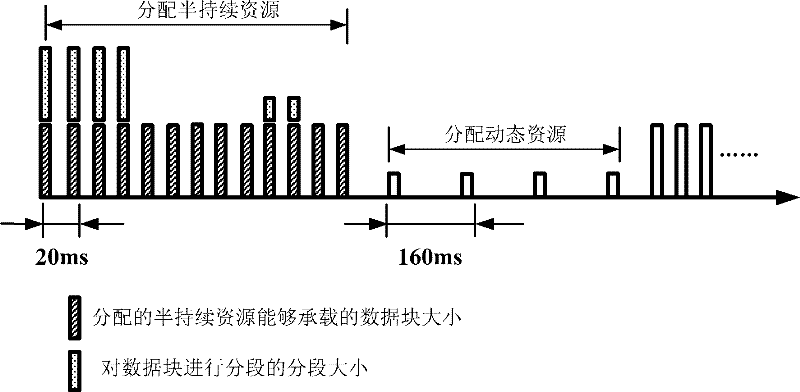Method for carrying out mixed resource distribution on voice over Internet protocol (VoIP) service
A resource allocation and service technology, applied in the field of communication, can solve the problems of low utilization rate of wireless resources, not considering the different packet sizes of VoIP services, and large packet transmission delays.
- Summary
- Abstract
- Description
- Claims
- Application Information
AI Technical Summary
Problems solved by technology
Method used
Image
Examples
Embodiment Construction
[0029] The content of the present invention will be further described in detail below in conjunction with the accompanying drawings and embodiments. Process such as Figure 4 shown.
[0030] The invention proposes a mixed resource allocation scheme for the VoIP service, and automatically distinguishes the state of the voice service in the wireless or mobile network by judging the data volume of the voice service in the buffer area. For each state, intelligently select different corresponding "integration of dynamic scheduling and semi-persistent scheduling" methods to meet the system-level performance requirements of voice services in wireless or mobile networks and reduce signaling overhead.
[0031] VoIP services are divided into uplink and downlink directions. For the downlink direction, the scheduler at the base station side can accurately know the data volume of the voice service in the data buffer area. We use BUFFER DL Indicates the data volume of the downlink voice s...
PUM
 Login to View More
Login to View More Abstract
Description
Claims
Application Information
 Login to View More
Login to View More - R&D
- Intellectual Property
- Life Sciences
- Materials
- Tech Scout
- Unparalleled Data Quality
- Higher Quality Content
- 60% Fewer Hallucinations
Browse by: Latest US Patents, China's latest patents, Technical Efficacy Thesaurus, Application Domain, Technology Topic, Popular Technical Reports.
© 2025 PatSnap. All rights reserved.Legal|Privacy policy|Modern Slavery Act Transparency Statement|Sitemap|About US| Contact US: help@patsnap.com



